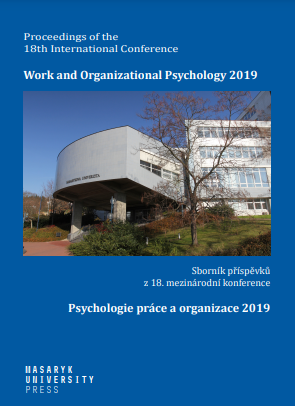The Intolerance of Uncertainty Scale – psychometric characteristics of the Slovak version, associations with related constructs and applications in work psychology
The Intolerance of Uncertainty Scale – psychometric characteristics of the Slovak version, associations with related constructs and applications in work psychology
Author(s): Jozef Bavoľár
Subject(s): Psychology, Organizational Psychology, Methodology and research technology
Published by: Masarykova univerzita nakladatelství
Keywords: intolerance of uncertainty; psychometrics; risk perception; indecisiveness; decision outcomes;
Summary/Abstract: Objective. The study presents the Slovak version of the Intolerance of Uncertainty Scale with the aim of examining its factor structure and construct validity through relationships with related variables. It also aims to sketch the possibilities of applying it in work psychology. Method. The study consists of two datasets which included a total of 220 subjects (age 21-60, mean age 36.7, 59.5% females). The participants completed four self-reported measures – Intolerance of Uncertainty (Carleton, Norton, & Asmundson, 2007), Domain-Specific RiskTaking (Blais & Weber, 2006), Indecisiveness Scale (Frost & Shows, 1993) and the Decision Outcomes Inventory (Bruine de Bruin, Parker, & Fischhoff, 2007). Results. The factor structure and internal consistency of the Slovak version of the Intolerance of Uncertainty Scale was confirmed. Indecisiveness was found to be related to only one factor – inhibitory uncertainty. The intolerance of uncertainty was associated more with risk perception than with risk-taking and no relationship with decision outcomes was found. Conclusions. The Slovak version of the Intolerance of Uncertainty Scale is an appropriate tool for measuring this construct. The results of the analysis highlight the importance of distinguishing its two factors – prospective and inhibitory anxiety. Limitations. The study is restricted by the absence of variables more directly related to the role of the intolerance of uncertainty in a work environment.
Book: Work and Organizational Psychology 2019
- Page Range: 12-21
- Page Count: 10
- Publication Year: 2019
- Language: English
- Content File-PDF

